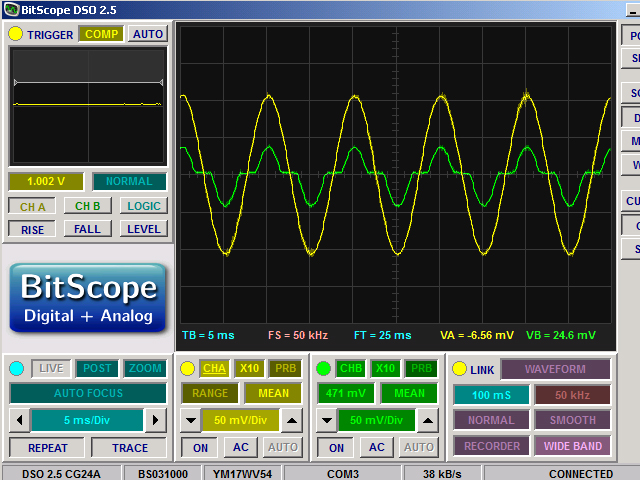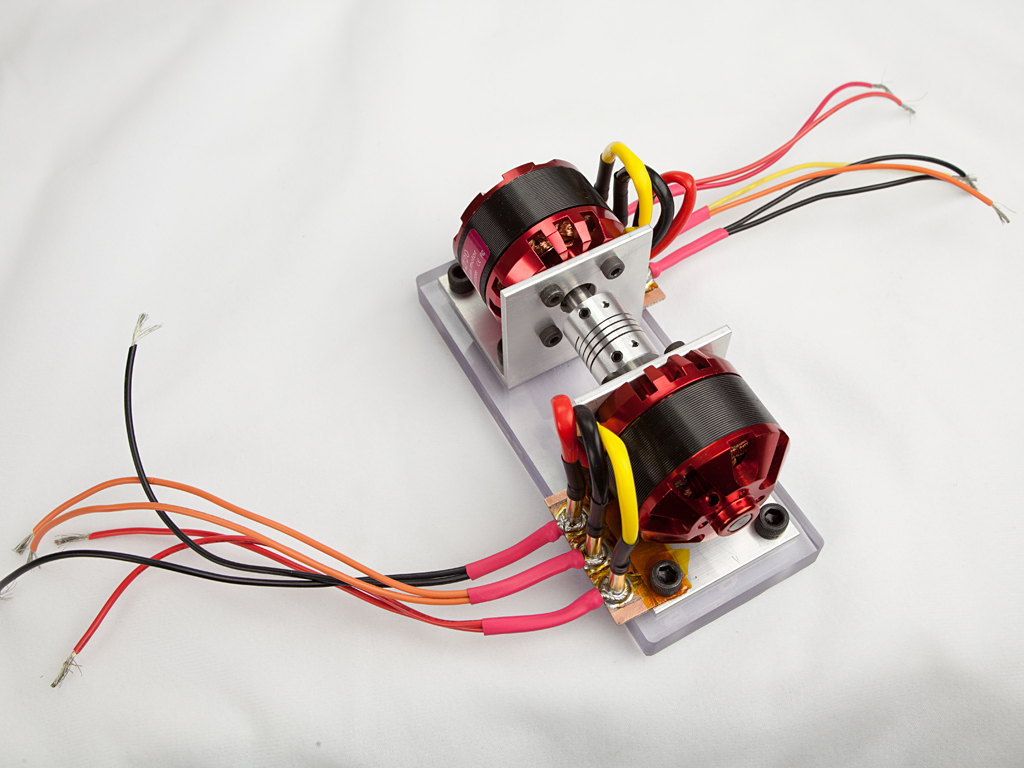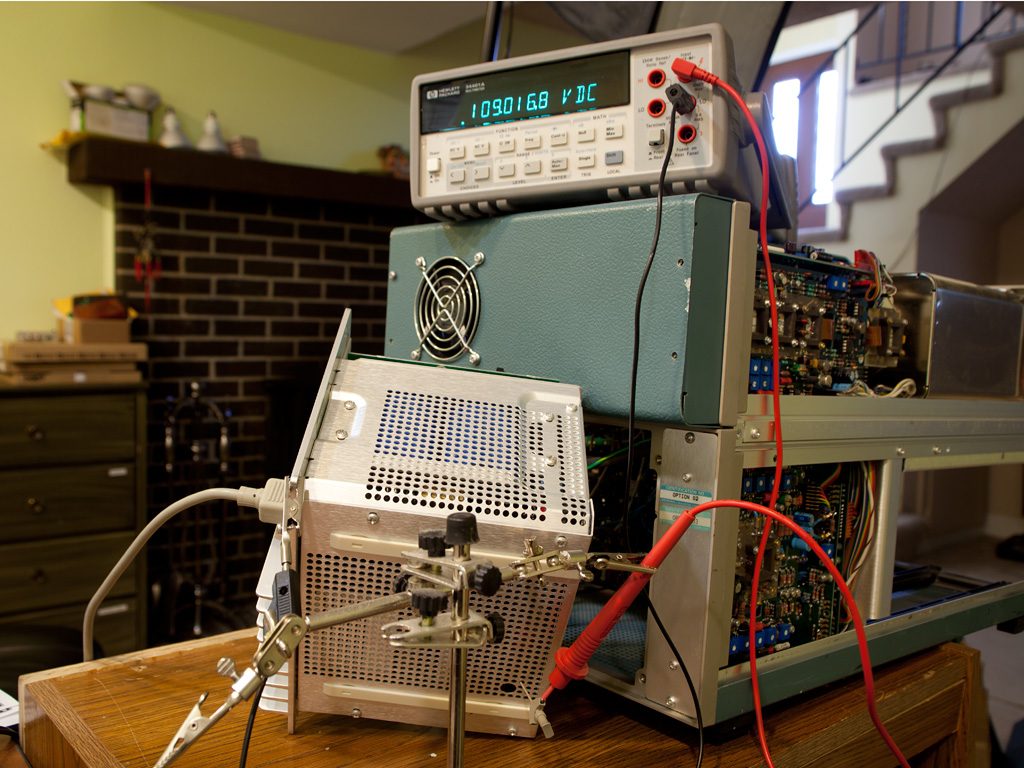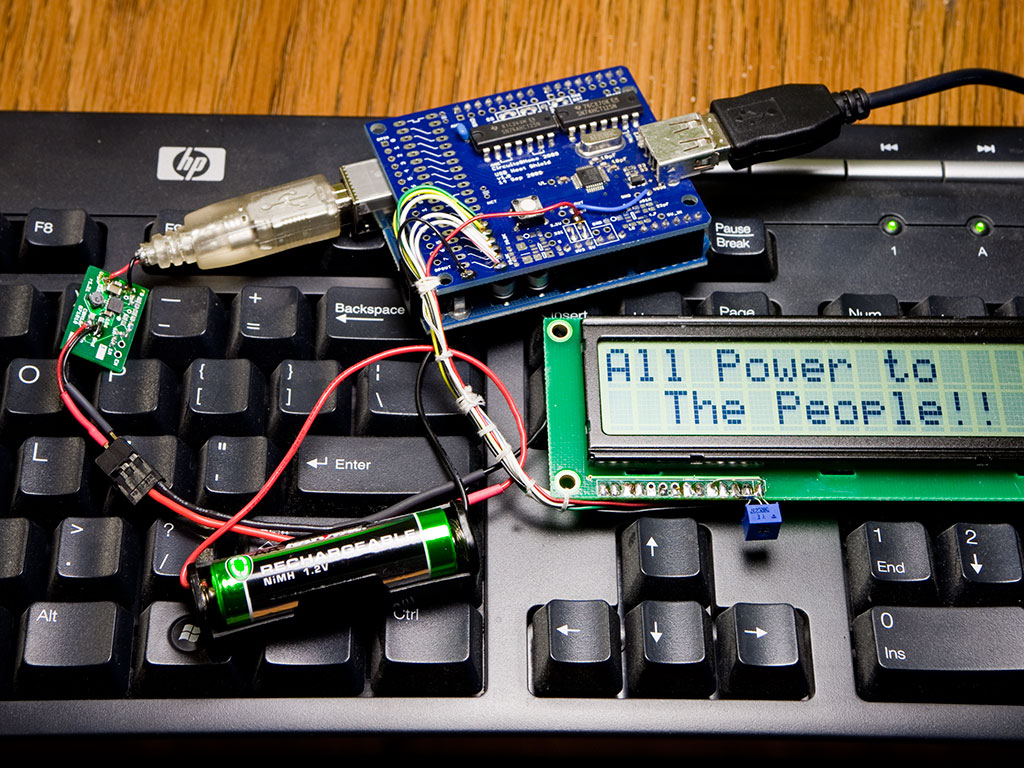 I was experimenting with some analog circuits and, while reading this article, built a test circuit to better understand how an operational amplifier maintains linearity using negative feedback. During this process, I ended up generating enough material for a short article—so I wrote one, hoping it might be interesting to someone. I also made a video, a link to which is available at the end of the article.
I was experimenting with some analog circuits and, while reading this article, built a test circuit to better understand how an operational amplifier maintains linearity using negative feedback. During this process, I ended up generating enough material for a short article—so I wrote one, hoping it might be interesting to someone. I also made a video, a link to which is available at the end of the article.
 Two brackets, made from 2″ aluminum angle profile, hold 50-size brushless outrunner motors rated at 100 A each. The brackets are bolted to a 0.5″ polycarbonate base, and the motor shafts are connected via a flexible coupler. Contact plates are mounted next to each motor—this makes it easy to swap out a motor if one burns out. High-current wires are soldered to the female contacts. I’m using double wires to increase current-carrying capacity and to allow monitoring half the current with my 50 A current probe.
Two brackets, made from 2″ aluminum angle profile, hold 50-size brushless outrunner motors rated at 100 A each. The brackets are bolted to a 0.5″ polycarbonate base, and the motor shafts are connected via a flexible coupler. Contact plates are mounted next to each motor—this makes it easy to swap out a motor if one burns out. High-current wires are soldered to the female contacts. I’m using double wires to increase current-carrying capacity and to allow monitoring half the current with my 50 A current probe.
 In this short article, I’d like to share a trick I learned today while checking the power supply of my trusty Tektronix 7104 oscilloscope. Step A2 of the calibration section in the manual calls for measuring and adjusting the pre-regulated 109V voltage at test point
In this short article, I’d like to share a trick I learned today while checking the power supply of my trusty Tektronix 7104 oscilloscope. Step A2 of the calibration section in the manual calls for measuring and adjusting the pre-regulated 109V voltage at test point TP1326. Normally, accessing this test point requires removing the power supply cover, which takes time and exposes high voltages. The test setup shown in the title picture demonstrates how to access this test point while keeping the power supply cover in place.
 Today's electronic projects often require multiple supply voltages. For example, 5V is commonly used to power microcontrollers (MCUs), while sensors and peripheral interface controllers typically operate at 3.3V. If your circuit includes both types of components, both voltages must be provided. Usually, one voltage is derived directly from the main power source (such as a battery or wall adapter), and the second voltage is generated from the first—using either a linear LDO regulator if it is lower, or a boost converter if it is higher.
Today's electronic projects often require multiple supply voltages. For example, 5V is commonly used to power microcontrollers (MCUs), while sensors and peripheral interface controllers typically operate at 3.3V. If your circuit includes both types of components, both voltages must be provided. Usually, one voltage is derived directly from the main power source (such as a battery or wall adapter), and the second voltage is generated from the first—using either a linear LDO regulator if it is lower, or a boost converter if it is higher.
 About a year ago, while researching low-startup-voltage DC-DC converters, I came across Texas Instruments’ TPS61200. This monolithic synchronous rectifier boost converter offers several notable features.
About a year ago, while researching low-startup-voltage DC-DC converters, I came across Texas Instruments’ TPS61200. This monolithic synchronous rectifier boost converter offers several notable features.
 I was experimenting with some analog circuits and, while reading this article, built a test circuit to better understand how an operational amplifier maintains linearity using negative feedback. During this process, I ended up generating enough material for a short article—so I wrote one, hoping it might be interesting to someone. I also made a video, a link to which is available at the end of the article.
I was experimenting with some analog circuits and, while reading this article, built a test circuit to better understand how an operational amplifier maintains linearity using negative feedback. During this process, I ended up generating enough material for a short article—so I wrote one, hoping it might be interesting to someone. I also made a video, a link to which is available at the end of the article.



